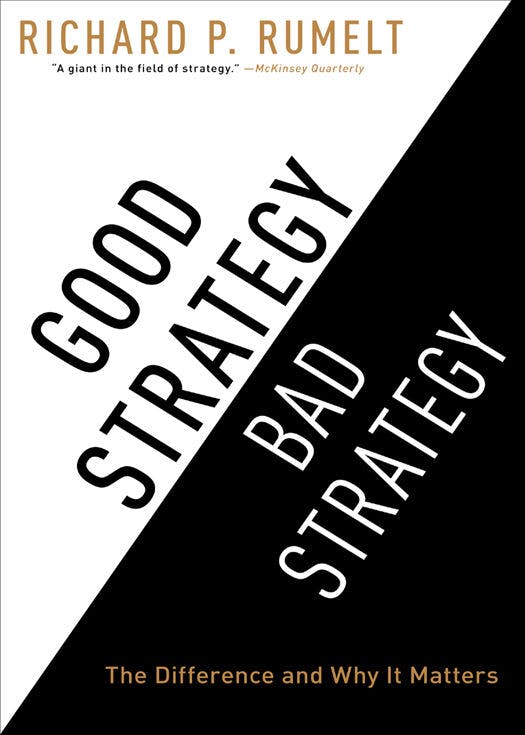Two masters trying to defeat each other in a chess game are, during a large part of the game, likely to be making moves that have no immediate end other than to “improve my position.” One does not win a chess game by always selecting moves that are directly aimed at trying to mate the opponent or even at trying to win a particular piece. For the most part, the aim of a move is to find positions for one’s pieces that (a) increase their mobility, that is, increase the options open to them and decrease the freedom of operation of the opponent’s pieces; and (b) impose certain relatively stable patterns on the board that induce enduring strength for oneself and enduring weakness for the opponent. If and when sufficient positional advantages have been accumulated, they generally can be cashed in with greater or less ease by tactical maneuvers (combinations) against specific targets that are no longer defensible or only at terrible cost.51983 ↱

Good Strategy/Bad Strategy
The difference and why it matters
Richard Rumelt